Introduction
We were looking forward to going to Mauritius to explore and relax after weeks of exhausting travel in Madagascar. After all, it is famous for its watersports…
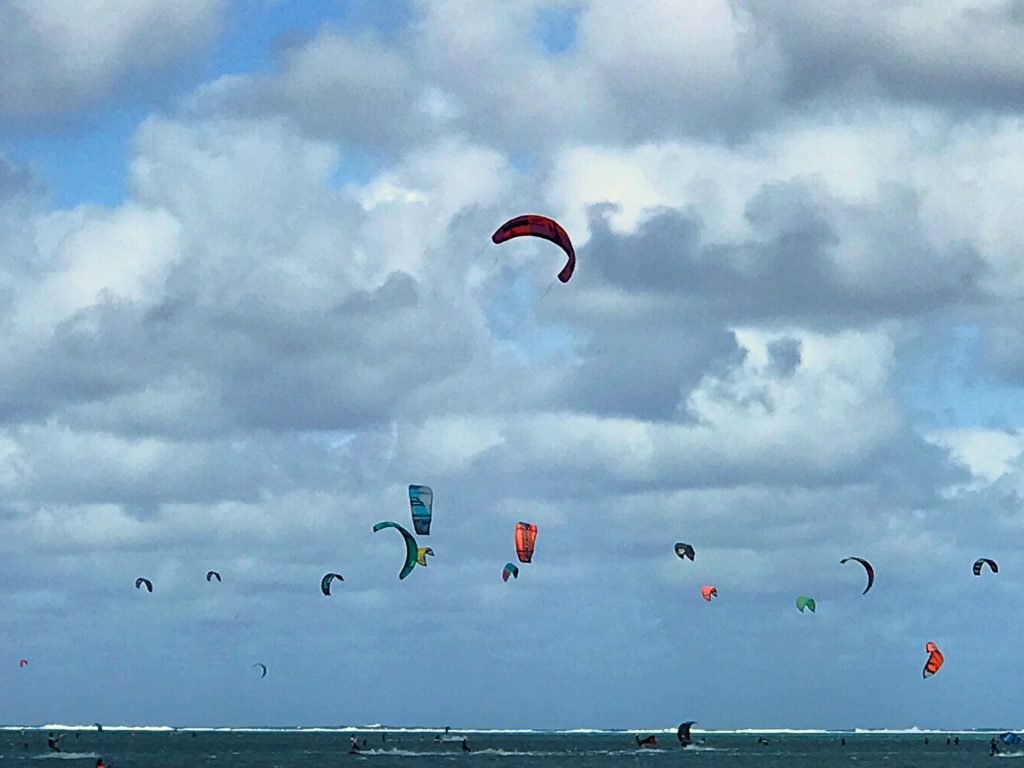
eye-catching mountains…
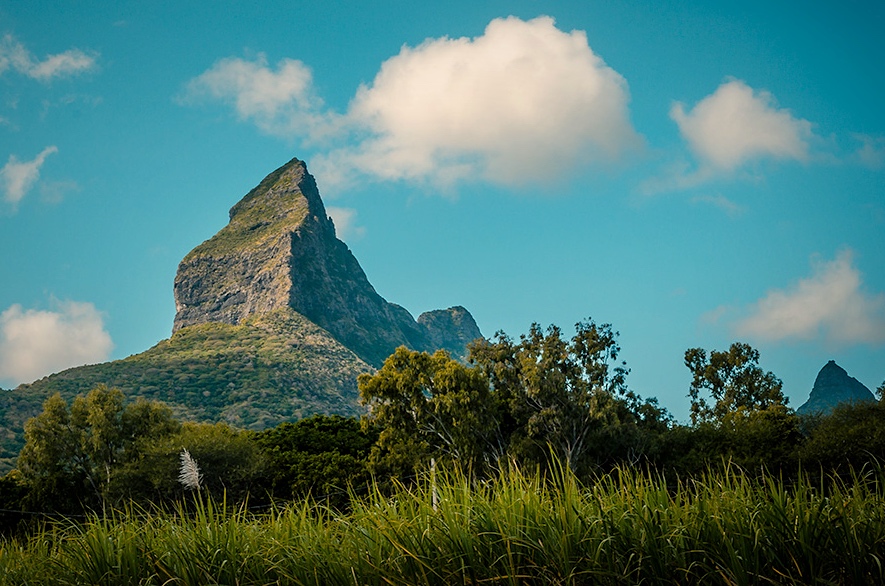
and colonial architecture.

We knew it was culturally diverse, but it really hit us on our first day when we were lost in a forested area, driving by gigantic Hindu statues.
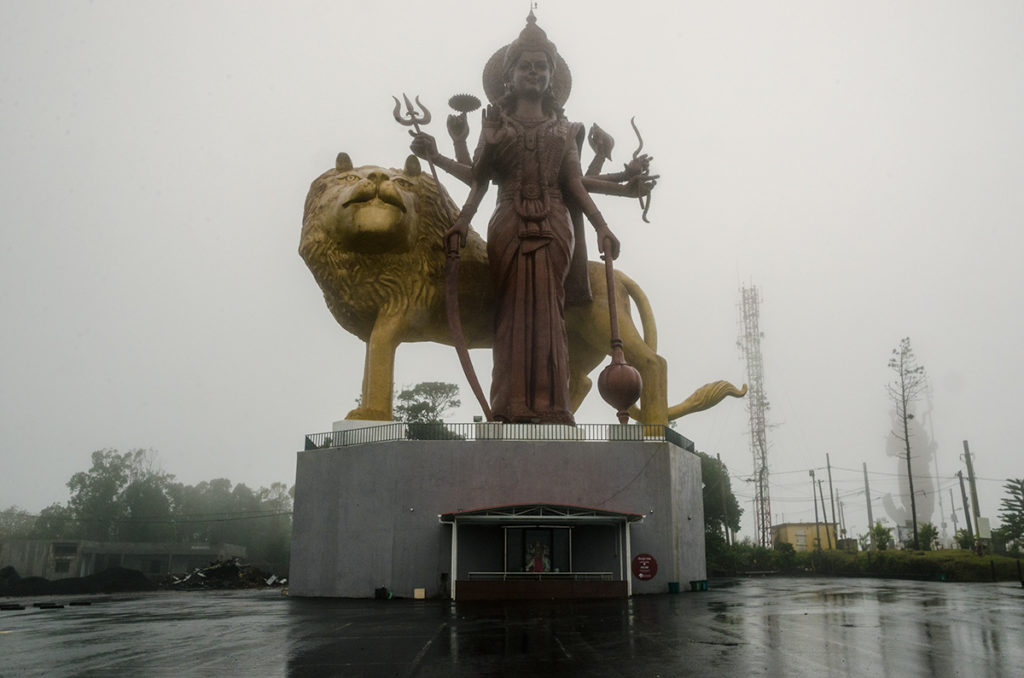
We saw an event hall which was having a celebration. We drove in and saw two men outside and asked for directions in English, the language of the government. They were answering us, but we could not understand them. At first, we thought they were drunk and slurring their words, which was true. However, we eventually realized they did not speak English, but maybe French. Later we found out it was a French patois. This country is a mishmash of cultural influences!
Why Travel to Mauritius?
Because Mauritius is far from everywhere (almost 5,000 km / 3000 miles to Dubai and even further to Singapore), most visitors spend a week to justify the travel time. Each day you can do something different from water sports and hiking opportunities to visiting markets and historical sites. You can stay in comfortable hotels, drive on paved roads and eat in nice restaurants. You don’t have to worry about your safety. What is not to like?
Travel Itinerary for Mauritius
My wife Khadija, friend Gaynor and I visited there in late July for a week, after nearly three weeks of strenuous travel in Madagascar (about 1,000 km / 600 miles west). Because Mauritius is a small island, comparable to Rhode Island or Luxembourg, we decide to stay in one place, the area of Flic en Flac, and travel to different parts of the island each day. This turned out to be a sound strategy.
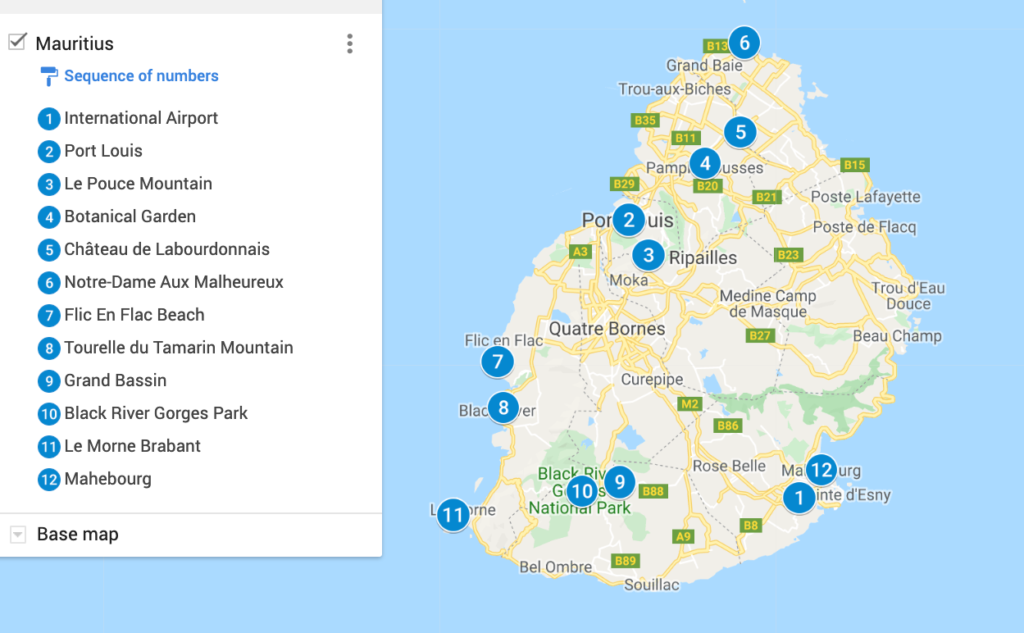
We could’ve stayed in any place on the island, but the west side has the best beaches, most accommodations and easiest access to main sites on the island. A typical itinerary could be:
- Day 1 – Lounge on the beach and swim in the ocean.
- Day 2 – Visit markets and historic sites of Port Louis, the capital.
- Day 3 – Take a boat ride to see dolphins or whales and snorkel.
- Day 4 – Drive to the north to see colonial plantations, botanical gardens, and pretty churches.
- Day 5 – Hike on a mountain, such as Le Morne Brabant.
- Day 6 – Drive to the eastern parts of the island to visit small towns and markets, such as Mahebourg.
- Day 7 – Either partake in more water recreation or tour the natural areas of the Grand Bassin and Black River Gorges Park.
One possibility is spending a day or two in Rodrigues Island for its natural beauty, giant tortoises and laid-back lifestyle.
We used Brandt’s Mauritius – Rodrigues – Réunion Travel Guide which provided accurate and detailed information.
Is Mauritius Safe?
Mauritius is generally a very safe place to travel. However, there is sporadic petty crime, so you should not leave valuables unattended or walk alone in deserted areas late at night. In some places, there are packs of roving dogs that should be avoided.
Culture and a Brief History of Mauritius
The added benefit of visiting Mauritius, as opposed to another mountainous island with beaches, is the culture is a unique blend of Indian, African, European and other influences.
In Mauritius, English is the language of the government and many businesses. French is the main language in newspapers and radio. School is taught in English and French. By far the most commonly spoken language is French Creole (pidgin). Also spoken are ethnic languages like Hindi, Tamil, and Mandarin. To understand how this came about, you must know some of Mauritius’ history.
The island was uninhabited until the 10th century when Arab traders landed there. In the 16th century, the Portuguese made it a port of call but did not live there. In the 17th century, the Dutch settled on the east coast and named it after Prince Mauritius. France was the main occupier in the 18th century where they established slavery and grew sugarcane and other crops. Of note, sugarcane accounts for almost all of Mauritius’ agricultural exports and covers almost all arable land, as with the fields by Le Pouce Mountain (third highest in the country).
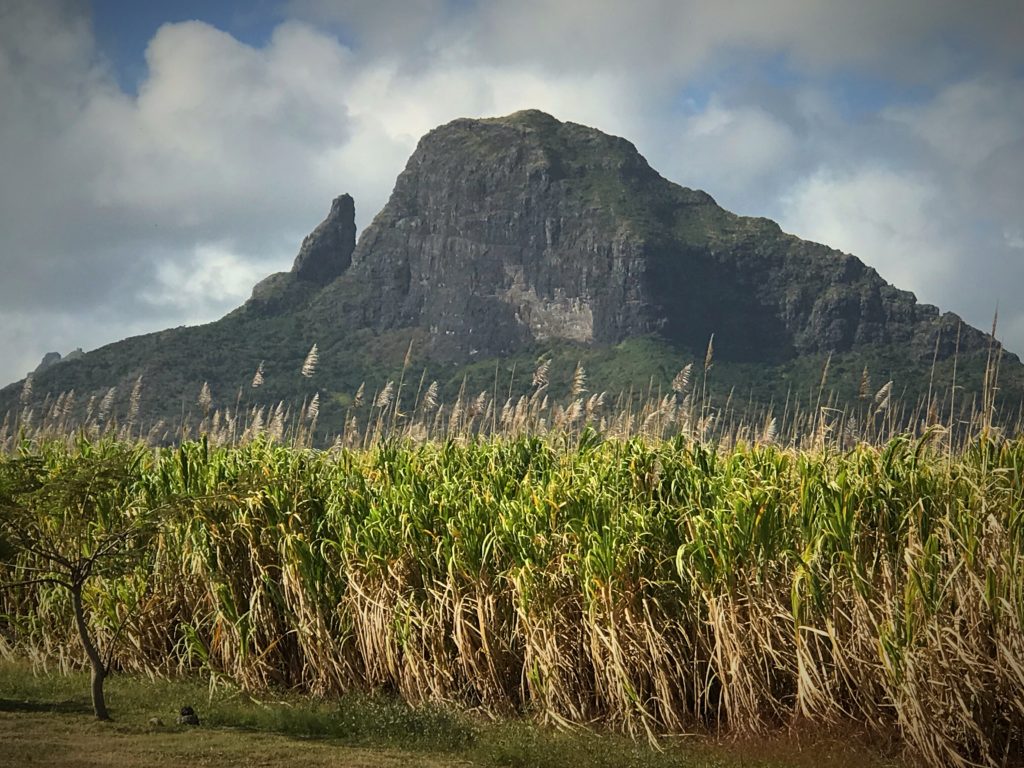
In the early 19th century, the British took control of the island during the Napoleonic Wars, but the French landowners and workers remained, communicating French or a pidgin French. The British abolished slavery but brought indentured servants from India to work in the Mauritian sugarcane fields. The mostly Hindu and Moslem descendants are now about 2/3 of the population, which is the reason for many Hindu temples, such as Kannanur Temple in Port Louis…

and Islamic mosques, such Jummah Mosque also in Port Louis.
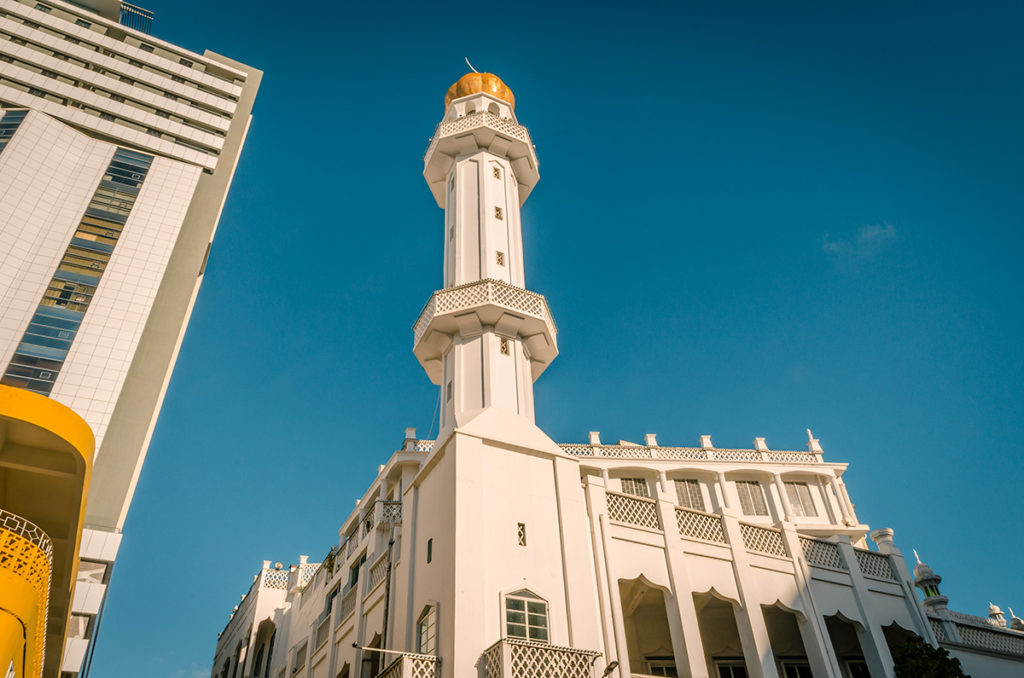
From the 1830s to the 1910s, the British and other European countries brought almost two million servants from India. They were working on sugarcane fields and tea plantations (e.g. Sri Lanka), as well as building railroads (e.g. Kenya). Indians also migrated to British colonies as soldiers, civil servants, merchants, and traders. As a result, there are large populations of people of Indian origins also in South Africa, Malaysia, Myanmar, Singapore, Reunion Island, Fiji, Guyana, Suriname, Jamaica, and Trinidad and Tobago. Mauritius is different in that it is the only country where they are a majority.
In 1968 Mauritius became independent but with a British Governor-General. It became a Republic in 1992 with an elected Prime Minister leading the country.
The second-largest ethnic group is the descendants of slaves (some of them mixed-race) who are about 25% of the population. The rest are mostly Chinese and European origins. The ethnic mix of the country is evident everywhere as in the markets of Port Louis.

The population is around 1.3 million. It is one of the most densely populated countries in the world, but it did not feel crowded to me.
Geography of Mauritius
The main island is volcanic with many surrounding, tiny islands. Mauritius has many scattered mountains, though no peak exceeds 900 m (3,000 ft).
These mountains are in the southeast.
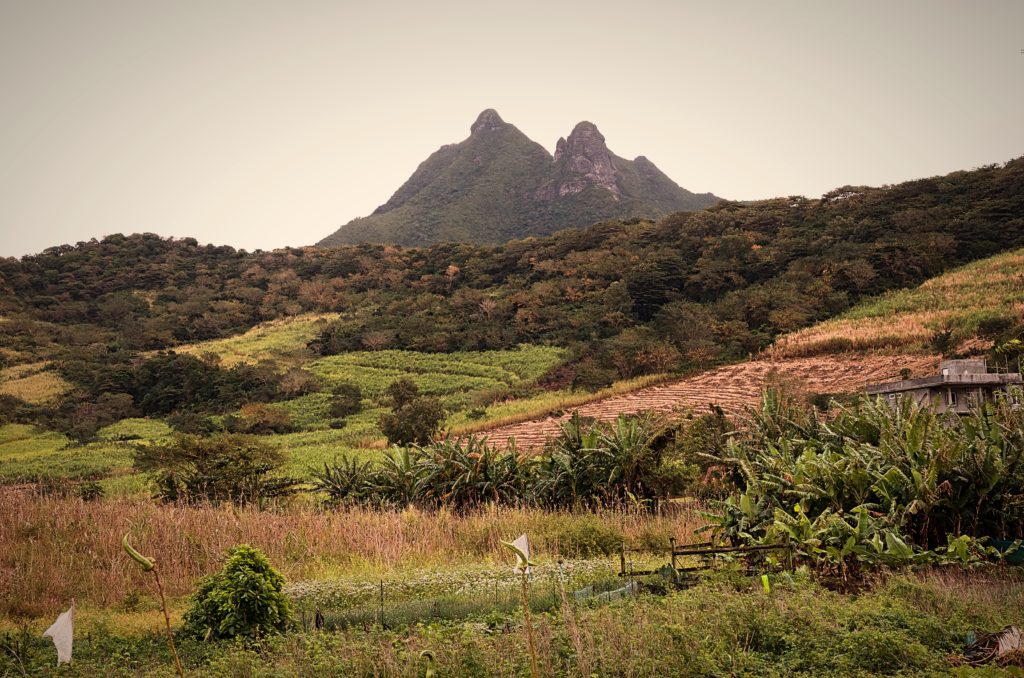
There is a ring of coral reefs around the island and many beaches, large and small.
This is a beach on Cape Malheureux.

The Mascarene Islands consist of Mauritius, Rodrigues (part of the country of Mauritius) and Réunion (a French Department). They were named after the Portuguese navigator Pedro Mascarenhas who visited there in the early 16th century.
The country is considered part of Africa even though it is over 2,000 km (1200 mi) from the mainland.
Transportation in Mauritius
Most people use hotel vans, taxis and buses to travel the island. Some, like us, use a rental car which costs about $300 a week from Europcar, not including gas. The roads are in extremely good shape, better than most U.S. cities. However, while doable, driving is challenging due to confusing roundabouts, few street signs, hardly any street lighting, left-sided driving, and aggressive drivers. If you rent a car, be sure you have insurance because accidents are common.
Lodging in Mauritius
Mauritius has a sizable stock of lodging options in all price ranges. We stayed in Flic en Flac in a large, modern, ground-floor, three-bedroom apartment that was offered through Booking.com, but would have been more appropriate for Airbnb. The adjacent shore was nothing but boulders and difficult to walk to the sandy beach section. In retrospect, we would have stayed at a hotel on the main coast road next to the beaches. We paid €1300 Euros (almost $1500) for seven nights. Of note, most hotels and restaurants catering to tourists quote in Euros because most visitors come from Europe on packaged deals.
Food in Mauritius
We cooked most of our meals in our apartment, buying from large supermarkets. Mauritius is known for its varied and delicious cuisine. However, when we ate at resorts or tourist restaurants, the food was lackluster or just plain bad and expensive, but I’m sure there is good cooking if you know where to go. Our best meal was in a modest restaurant in Mahebourg called Salut Les Copains. One positive thing about Mauritius is there are plenty of high-end coffee shops, especially in malls. We visited one every day.
Port Louis, Capital of Mauritius
Port Louis was founded and named by the French in 1735 and has a population of around 150,000. It remains the most important city due to its protected harbor, the largest in the country.
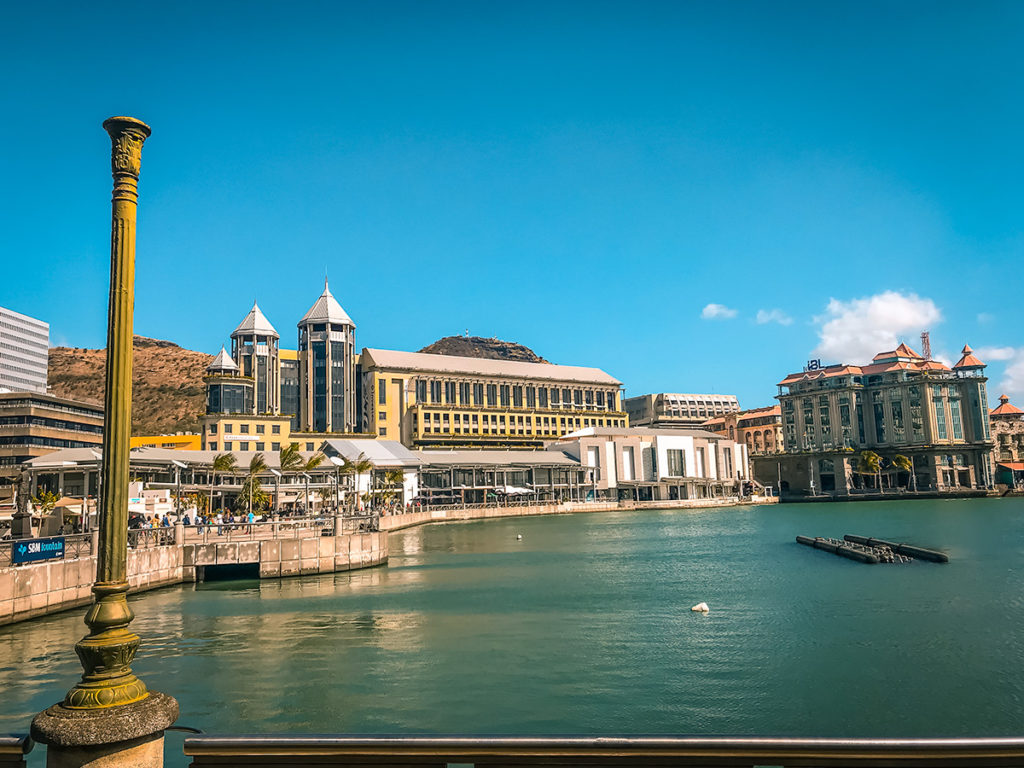
Within the city are many museums and colonial sites mixed in with modern buildings and basic retail shops. We were there on Sunday and no museums were open.
The Central Market is the oldest in the country and a lively area for locals and tourists. There are several sections for souvenirs and toys…

apparel…

and fresh food.

The Roman Catholic St Louis Cathedral was built in 1814 in the shape of a Latin cross. It’s the third church on the site as the initial one was destroyed by a cyclone and the second one collapsed.

The interior is not ornate yet appealing with wood paneling and stained-glass windows.
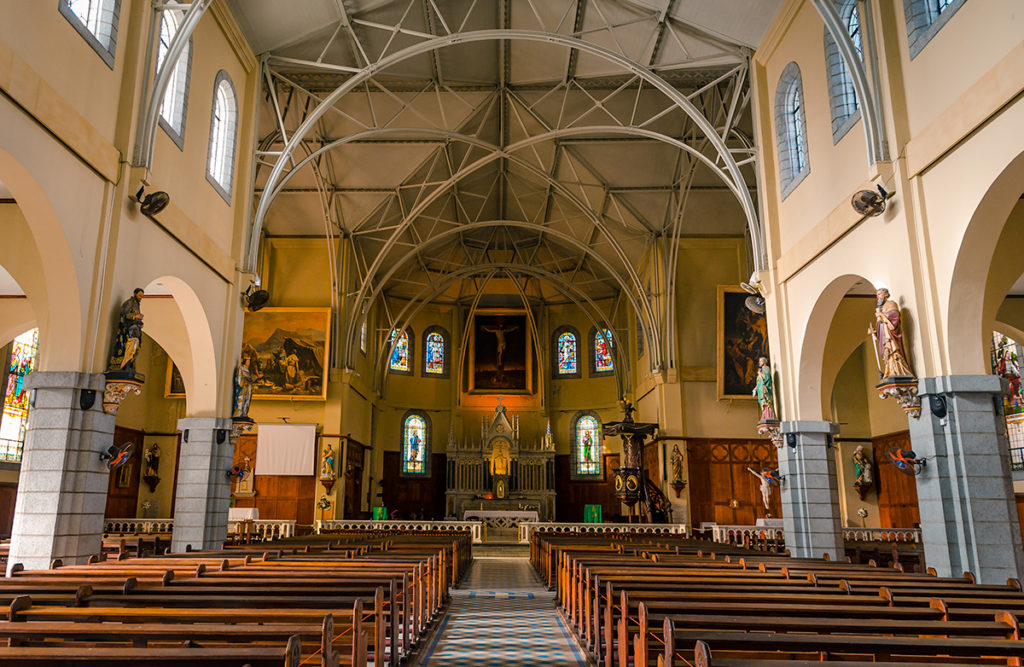
Aapravasi Ghat is a UNESCO World Heritage Site. The partial remains of stone buildings were once an immigration facility for processing hundreds of thousands of indentured servants who came here after the abolition of slavery.

There is not much to see, but the history is interesting.
Northern Mauritius
The Sir Seewoosagur Ramgoolam Botanical Garden is a great place to spend a few quiet hours strolling.

Its claim-to-fame is being the oldest in the southern hemisphere, approaching its 300-year anniversary in 2029. At first, this land was a small vegetable garden started by the governor of the French colony. Eventually, the French sent a botanist to collect seeds from around the world to start a spice garden that still exists. The British continued expanding it, naming it the Royal Botanical Garden and adding orchids among other flowers. There are relatively few signs identifying species. There are guides-for-hire when you enter if you want detailed information on the plants and the animals who have taken up residence. One place I liked was the water-lily pool.
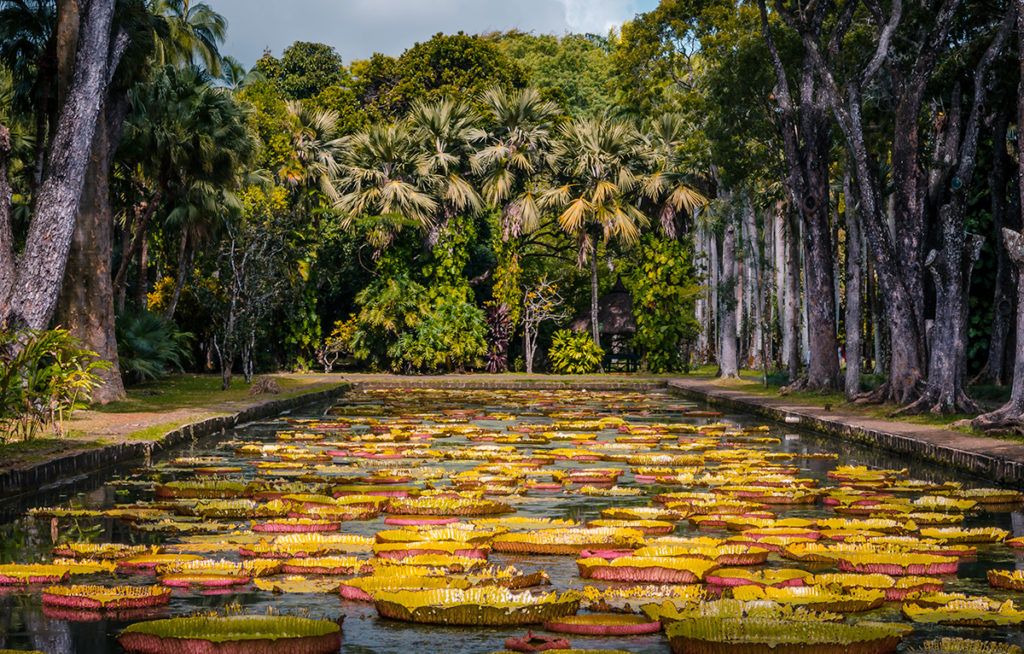
In 1988, the garden was named after Sir Seewoosagur Ramgoolam who was the first prime minister and the founding father of Mauritius as an independent nation. A short drive outside is a quaint coffee shop with the unlikely name of Wiener Walzer Café where we enjoyed excellent cappuccinos.
The Château de Labourdonnais was built in 1856 and the estate is known for its beautiful home, garden, and orchard. The approach to the house is on the Avenue of the Banyans, where 150-year old giants form a canopy and frame the view of the residence.
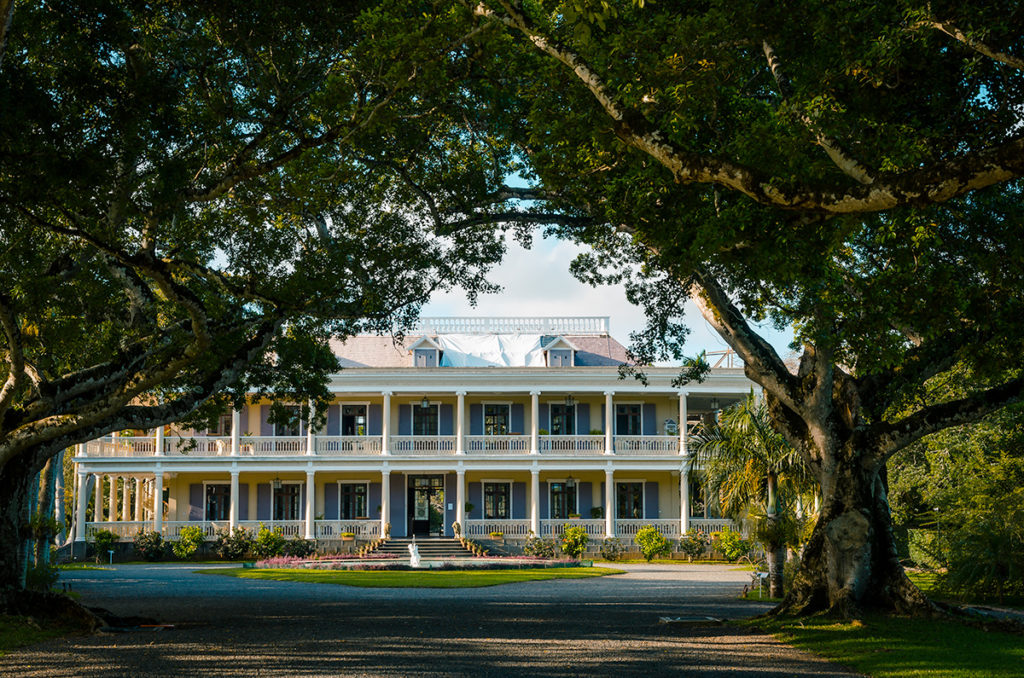
Like many large historical houses, it is open for public viewing to collect fees essential to maintaining it. Almost all the rooms have been tastefully refurbished (some by local artisans) including the dining room with a restored mural that was severely damage during a storm when the roof collapsed.

I am a fan of old homes and appreciated the veranda surrounding the whole house, the office with antique furniture and cloth wallpaper, the floating stairway, the entry room floor with intricate, inlaid-wood patterns, and the lion sentries in the front.

The estate also has an art gallery, restaurant and distillery.
The Notre Dame Auxiliatrice is one of the most photographed site in Mauritius with its intricate woodwork, bright red roof, and repeating A-frame motif.
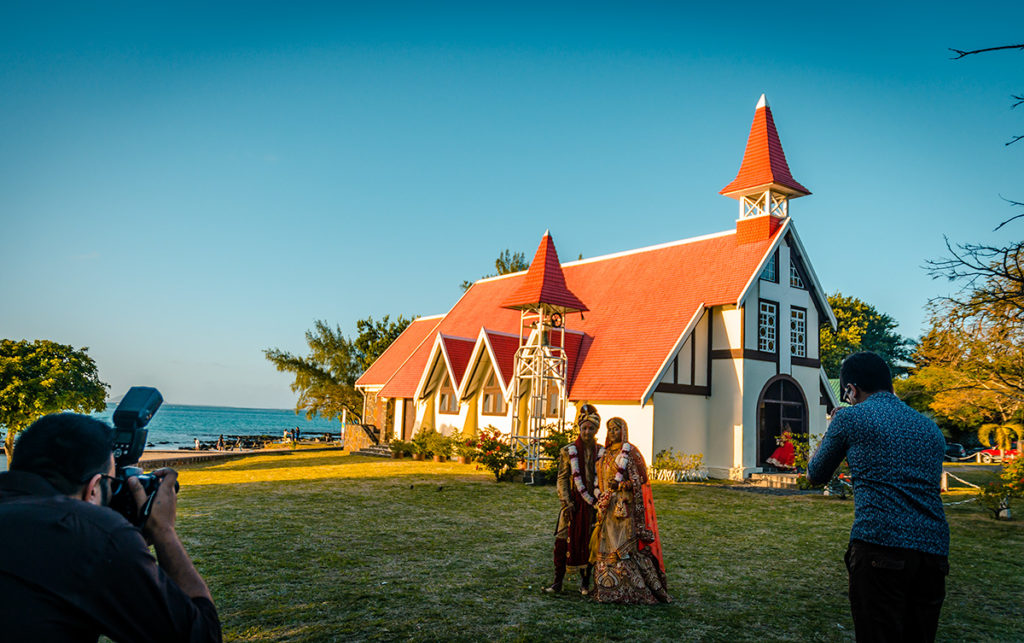
We were there in the late afternoon. Morning sunlight works better for photography as it illuminates the front.
Apparently it’s common for people to fake being newlyweds to get photos here as there is a sign specifically prohibiting this practice.
Southern Mauritius
Grand Bassin is a lake sacred to Hindus, tucked into the mountains and surrounded by temples and statues. To the faithful, it represents the Ganges River. It is among the most important Hindu pilgrimage sites outside of India. There are two giant statues: the female warrior Durga and her lion and Shiva with his trident.
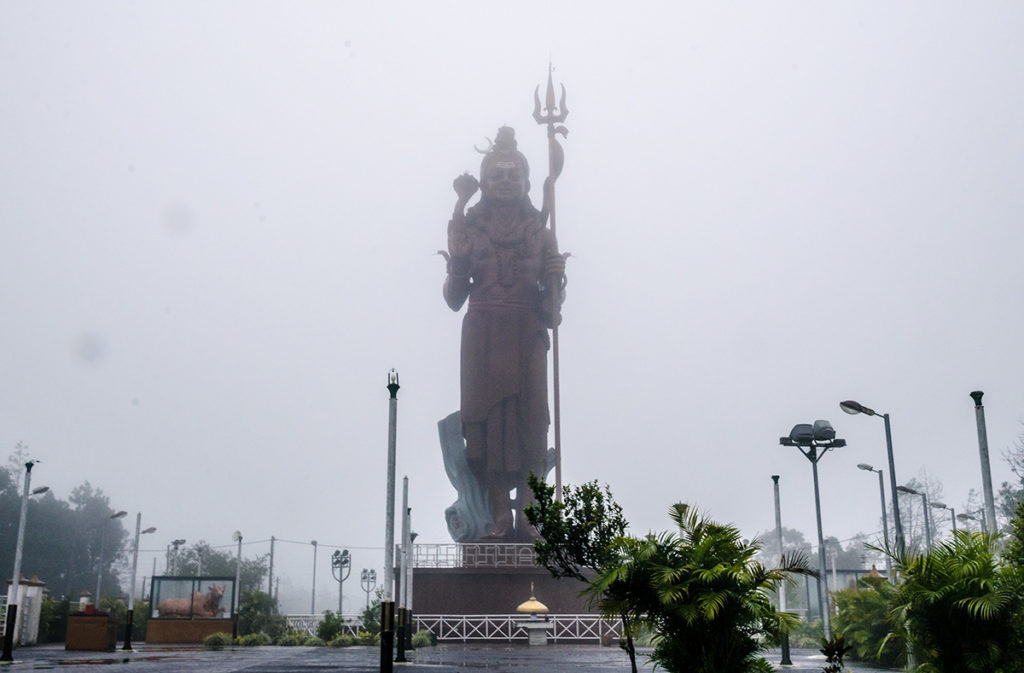
It was rainy and misty when we were there, a common occurrence, which provided a mysterious aura. It would be interesting to be here from the end of February to the beginning of March where thousands of pilgrims come for prayer and reflection.
The Black River Gorges National Park is the largest and most popular in Mauritius. Before it became a reserve, the area was prime for hunting. Upon the identification of over 300 species of flowering plants and many endemic and endangered species of bats, birds, and monkeys, the site became a protected park to help preserve the environment of the forest.
The park is a thick forest with many waterfalls, canyons, and rivers.
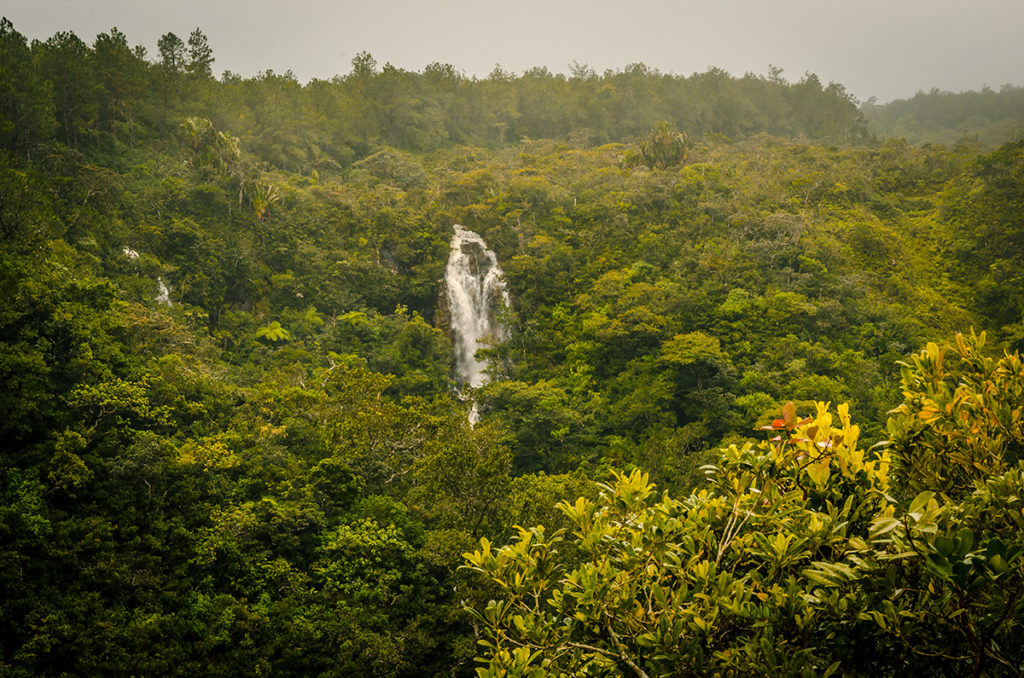
Eastern Mauritius
Mahébourg is old, dating from the Dutch era in the 17th century and was the original main port of the island. The coastal city is backed by Lion Mountain and lined with rocky shores. When the port was moved to Port Louis, Mahébourg was left as a sleepy fishing village. It has a Naval History Museum and opportunities for snorkeling and paddleboarding. We just walked around because it was the first non-tourist town we encountered.
The Monday Bazaar offers handicrafts, produce, and street food. It takes place near the water and is actually there every day but doubles in vendors every Monday.
We experienced torrential rains for about a half-hour but the locals were nonchalant and waited for it to subside.
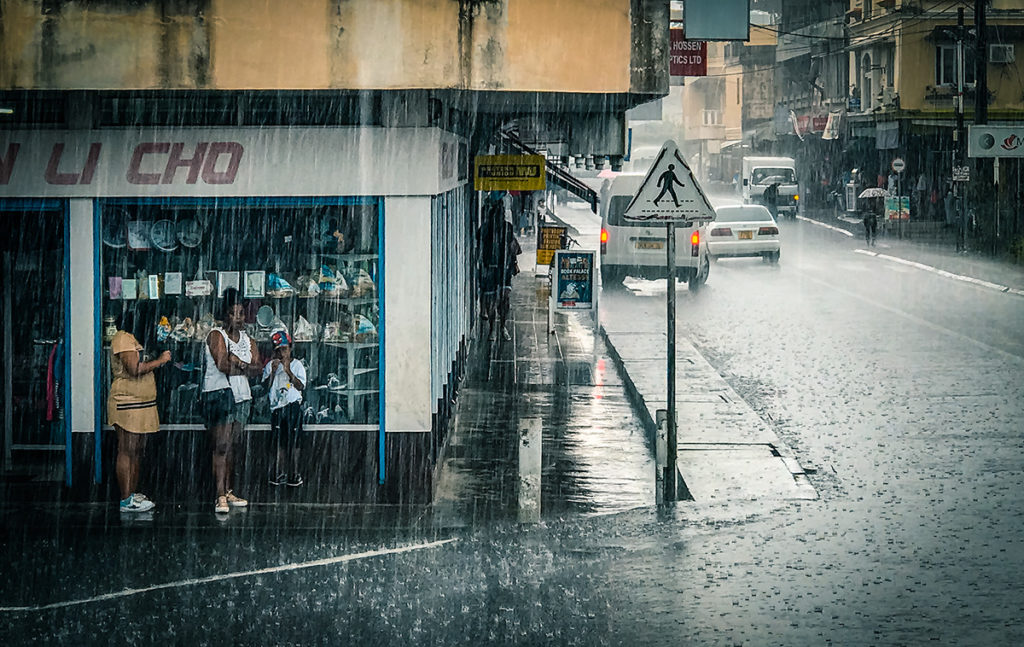
I loved the symbolism of the crumbling Dodo Music shop which probably sold CDs that nobody buys anymore. It also reminded me of the flightless dodo bird which is the poster child of species extinction. I had no idea it was found only on Mauritius.
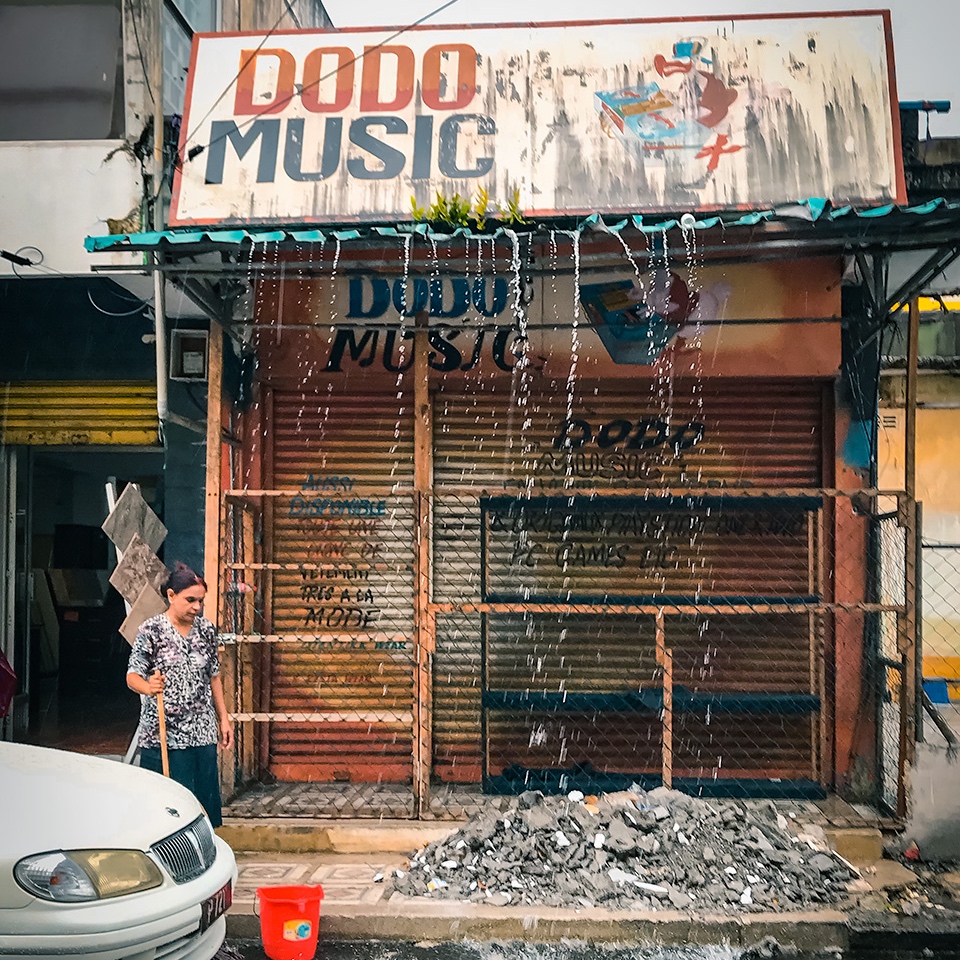
I’m not sure there is any social commentary in this, but a busy place was the local casket maker.
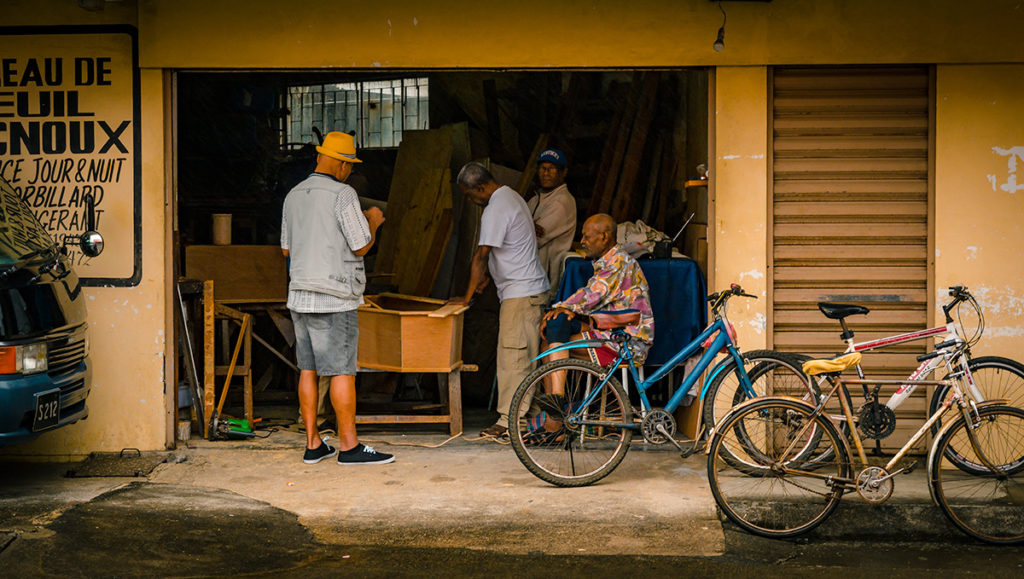
In the diffused light of the rainy sky, this mural on the Kong grocery story stood out.
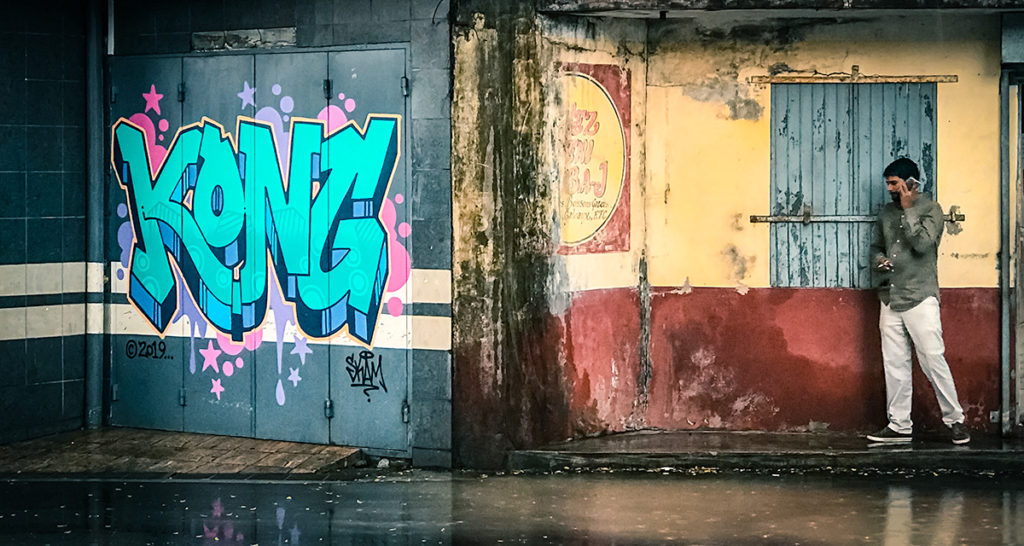
The Rault Biscuit Factory is in the north of the town and has been family-run since 1870. They give tours of the factory that end with tea and a sample of one of their biscuits. The female bakers wear matronly clothes and bonnets.

It is supposedly the only place in the world to produce manioc (cassava or yuca) biscuits, making them almost entirely by hand with a secret recipe that has been passed down through four generations.
Western Mauritius
Flic en Flac has a long beach and a blue lagoon with a combination of modest buildings and resort hotels. Overall it is still quiet and relaxing despite steady development. Here we saw this family on a jetty enjoying themselves.
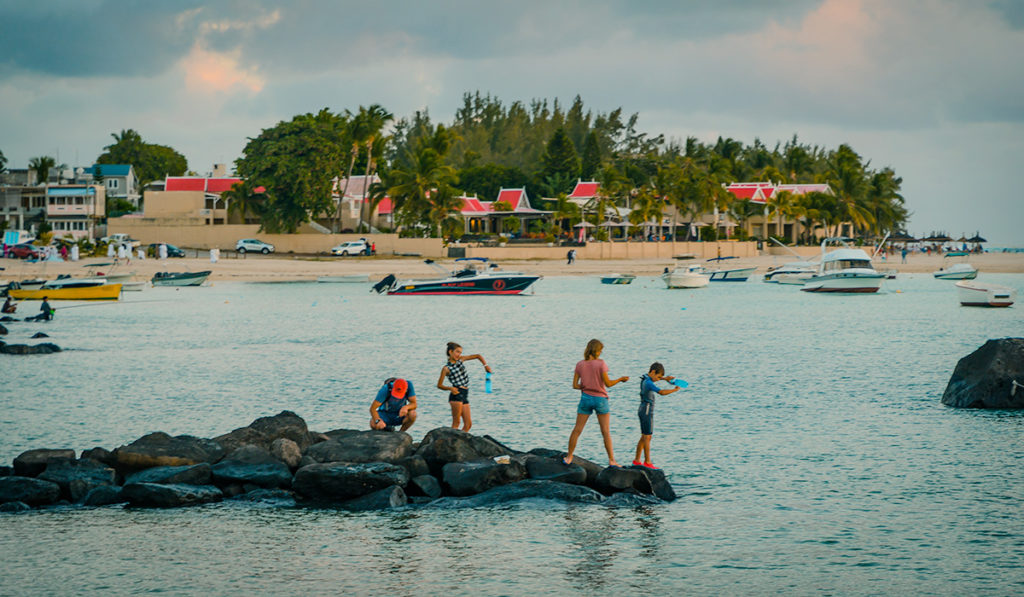
Gaynor took a day-sail on a catamaran from Grande Riviere Noire point to view dolphins and snorkel. The boat provided a good view of the island.
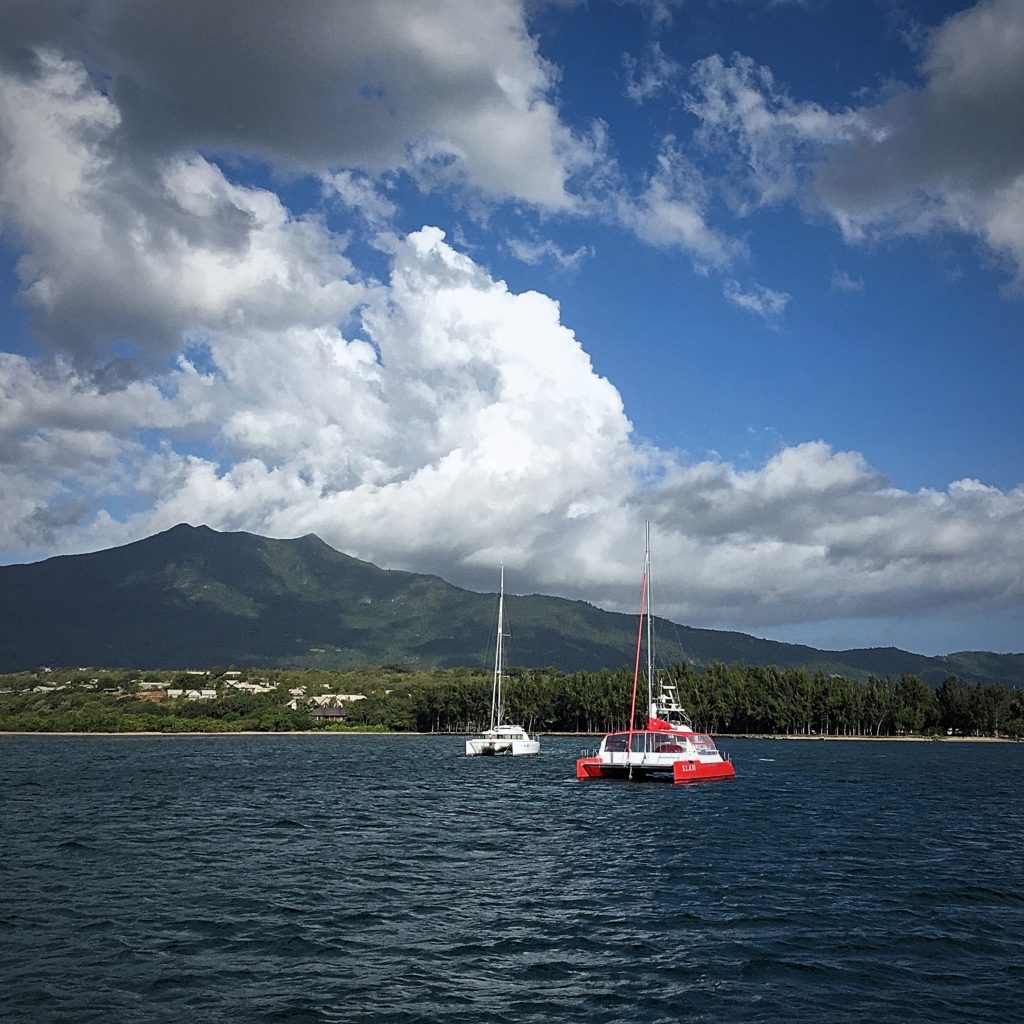
Gaynor grew up in the Caribbean and has been a water enthusiast her whole life. However, she found this excursion to be a disappointment. The sailors were not knowledgeable about the dolphins but chased them down in violation of established rules. There was unlimited cheap booze and food which seemed to be the main focus of the passengers. Only three or four people snorkeled in an area without healthy coral. The visibility was bad which is typical of winter months there. She advises to take a smaller environmentally conscious tour and book as far ahead as possible.
Le Morne Brabant Mountain is a UNESCO World Heritage Site situated on the tip of the Le Morne Peninsula. The mountain is a prominent site in the southwestern part of the island.
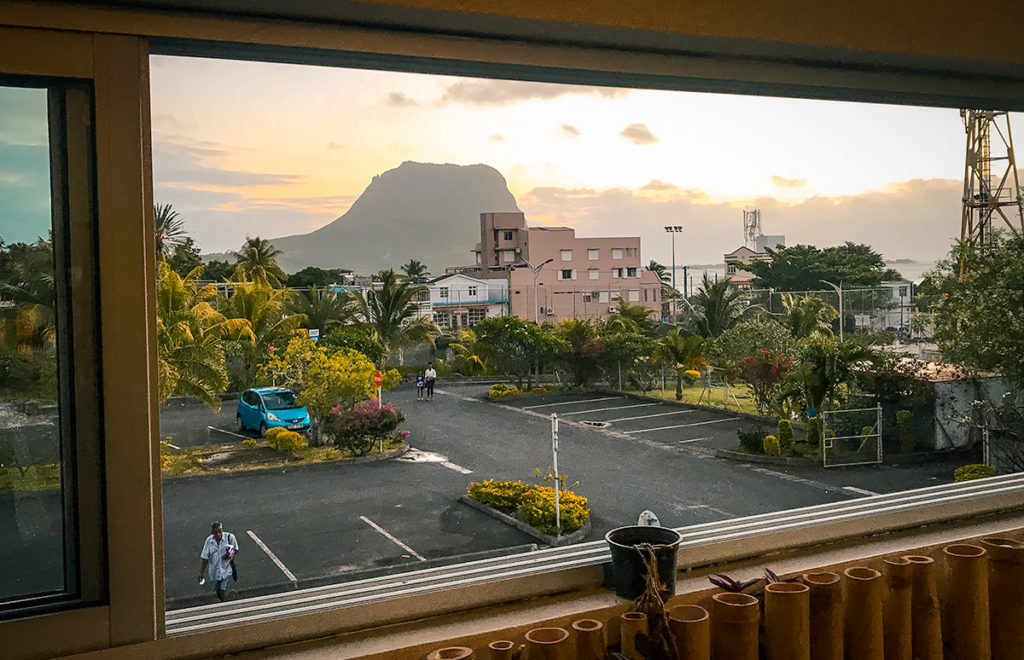
Le Morne is seen as a symbol of freedom from slavery and oppression in Mauritius as it was the home of escaped slaves. It was called the “Maroon Republic” as escaped slaves found shelter in the many caves in the mountain. There is an unconfirmed story that when a group of British soldiers went up the mountain to announce slavery was abolished, the slaves misunderstood and thought they were being taken back in captivity. As this was a fate worse than death, they committed suicide by jumping off the mountain.
I climbed the mountain to a ridge near the top with a group of Europeans. Our guide was Steeve Laridain who has climbed this hundreds of times and was in superior condition.

The first half was walking on a moderately-sloped, wide path. The rest of the hike involved many stretches of climbing over boulders and rock formations.
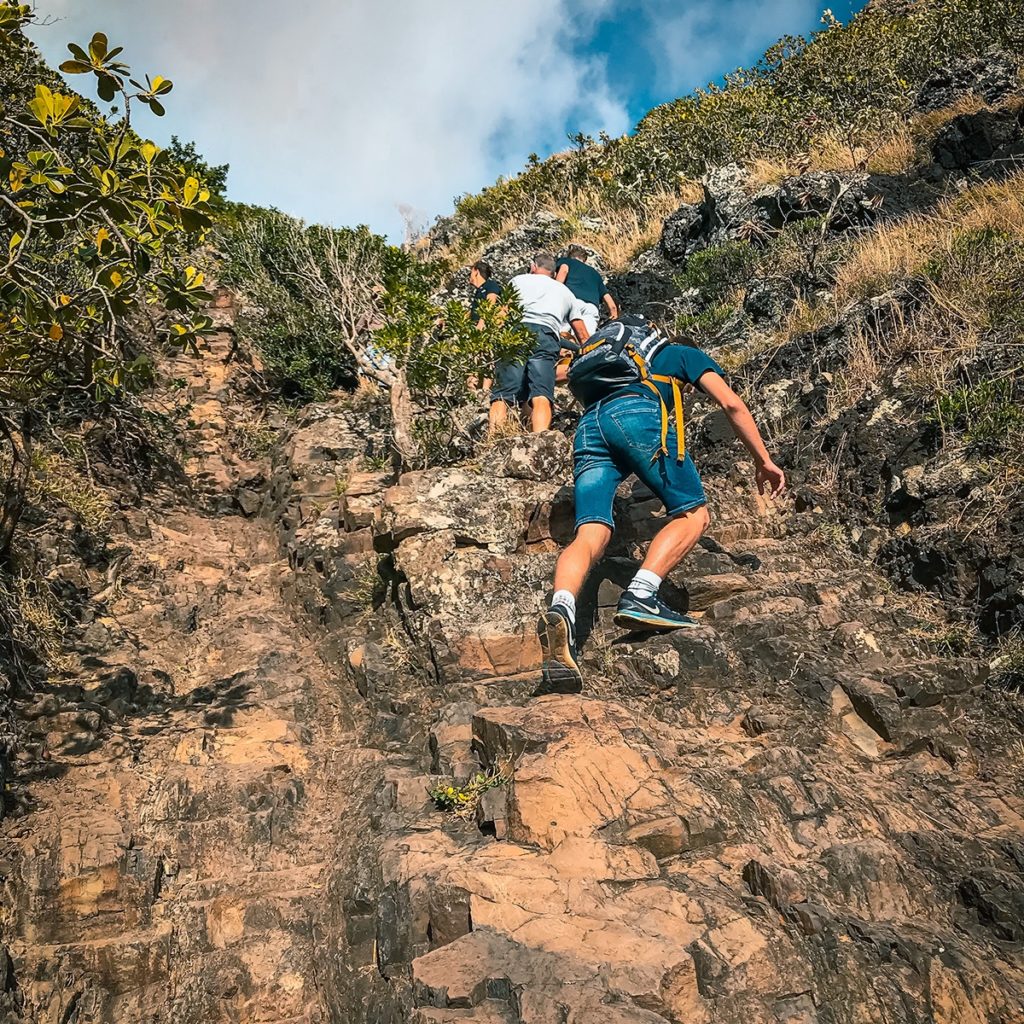
On the way, I rested on ledges to take in the fantastic views.
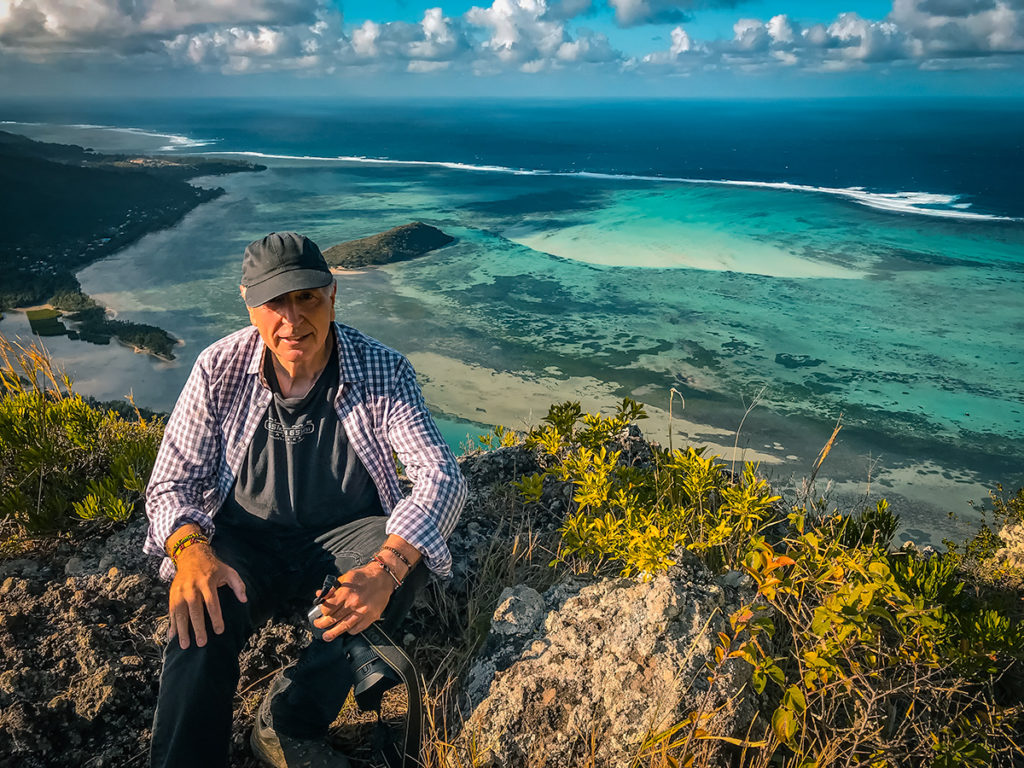
Eventually, we reached our destination where there was a steel-framed cross.
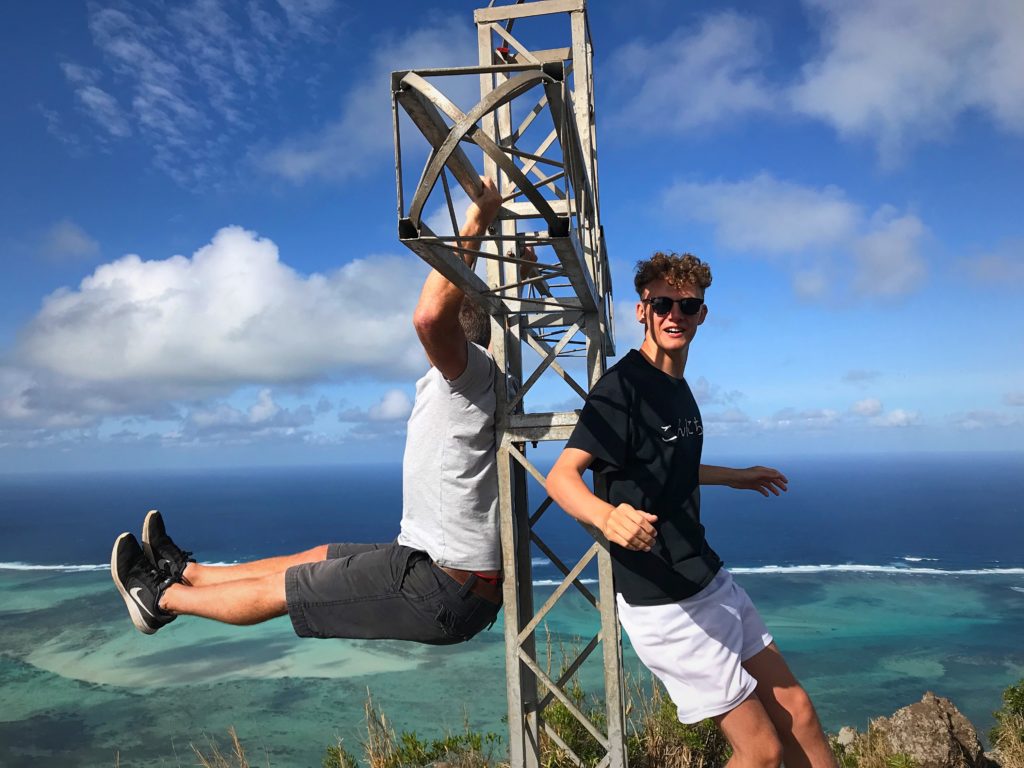
The hike lasted about three and a half hours. While not a long time, a person has to be in reasonable shape to do the climb and capable of scrambling over large rocks and ridges.
Final Thoughts on Mauritius
We went to see our guide Steeve play with his band at the Zen Enso Restaurant near Le Morne. They were very good musicians and played a variety of genres from Pink Floyd rock to Miles Davis jazz, including this blues jam.
Steeve was playing the acoustic guitar on the far right. This was a super way to spend our last night.


